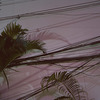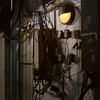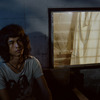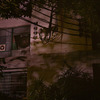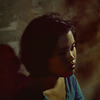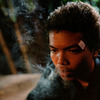A Conversation with CPC 2011 Winner Nigel Bennet

Nigel Bennet’s Silence Has an Echo was picked by Michael Mazzeo as one of the winning entries to this year’s Conscientious Portfolio Competition. Michael wrote: “This portfolio offers enough information and ambiguity to elicit countless narratives. Nevertheless, the mood of the work is certainly unsettling and, I believe, very appropriate given the current state of the world.” I talked with Nigel about the series in an extended conversation that you can find below. (more)
Jörg Colberg: Tell me a little bit about “Silence Has An Echo.” What are we looking at there?
Nigel Bennet: Well, it’s a whole lot of things, but primarily a reaction to political violence. I moved to Bangkok at the end of 2008. I had studied Thai language at university a few years earlier and wanted to finally spend a decent amount of time there before I completely lost the ability to speak. This really coincided with the beginning of the most turbulent period the country has seen politically in recent years.
But it was also a kind of difficult time for me personally as well: I’d gotten funding from Canal+ in France to make a short film in Thailand, but just as we were due to start shooting, protests shut down the airports and neither the French actors and crew, nor my wife, were able to get into the country. So although we did eventually get to make the film, it didn’t start well. Then in the end my wife found it very difficult there because of the language barrier, so she left earlier than me… then money problems… and meanwhile there’s the whole political situation just getting worse and worse, and quite a few of my friends were directly involved in the protests on one side or the other. So this all just made for a pretty tense period.
I don’t know how interesting it would be for people if I went in to the finer details of Thai politics here, but my very crude analysis would be that it’s a power struggle between the old military/royalist elite who’ve run the nation for the last 70 years and are basically born into power, and an “upstart” new-money elite, who ultimately rely on popular support for their power. Meanwhile, as is inevitably the case in such situations, ordinary people are stuck in between as cannon-fodder.
My own view is that neither side have anything much to offer beyond furthering their own personal interests, and despite introducing the occasional token policy of benefit to the working class here and there, they really couldn’t give a shit about the average citizen. It’s just smoke, intended to distract while they continue to line their own pockets. But, having said this, one side enjoys huge support from a clear majority of the population, and if you believe in democracy then obviously you have to give people their choice of leader, no matter how much you might dislike him or his policies. This has now happened, more or less, but it took the deaths of roughly 90 people and the burning down of some very expensive real estate to get to this point.
So that’s the background, basically. And when things really started to get nasty I knew that I had to react in some way. Although I started out as wanting to be a classic documentary photographer - covering wars and disasters - I have no interest in that genre of photography now, and nor am I in any particular rush to die, so when the violence really got heavy I stayed cowering in my apartment and obeyed the nightly curfew like everyone else. But as soon as it looked like the worst was over and the risk of sniper-fire had lessened, I went out with my camera, flashes, stands, softboxes… and basically dragged all this heavy stuff round half the city for a day… without even taking a single frame. Things were very tense, and what with all the burnt out buildings, discarded personal possessions left behind by the protestors, and heavily armed troops all over the place, there was plenty of material there. In fact I later learned that a bomb went off right were we’d been 20 minutes earlier. But I just felt like I had nothing positive to add, and therefore it was better to say nothing.
Instead, the images you’re looking at are what came to me with a little time and reflection. I wasn’t so much interested in the “spectacle” of political violence anyway, so much as the experiences of individuals. Those who pay the price. Not in any hugely dramatic way. Just ordinary people who live with the consequences of these power games: the people who inevitably stand to gain the least (when compared to the profits made by the victorious political leaders) and yet ultimately pay the most. You and me basically.
The “landscape” images were something I’d been noticing increasingly at that time. I’ve thought a lot about the “why”, and I was conscious of, for example, some of the things that Michael Mazzeo said about these photos when I started producing them, but I quickly just decided to put all allegory and symbolism out of my head. A lot of my previous work has been a little too premeditated and constructed I think, and I just wanted this to be a lot more emotional… a gut reaction to what had happened, so I went with instinct more than reason. I like to think of it as “internal reportage”.
I was hoping to continue the project further when I was back in Bangkok at the start of this year - in the months leading up to the elections - but I’d moved away from Thailand by then, and therefore a lot of the tension that I’d felt from being there in that situation day to day had dissipated. And it probably had to a certain extent even for the people living there to be honest; as the massacre at Rachaprasong slowly faded from memory, a lot of people I know seemed to have just become tired of the whole conflict and wanted an end to the violence and all the disruption to their lives. It seemed pointless to continue without the tense undercurrent which was present when I first started making the work.
JC: This just seems like one of those topics that one might want to come back to. Or maybe it’s simply my fascination with stories that center so much on actual events - on things we in the West hear about - but that have huge undercurrents going through, with a long build-up, the event itself, and then the aftershocks that might travel through the system for a long time. So much of photojournalism and even of documentary photography is only concerned with the drama on our front pages (paper or web), which basically leaves us in this state of incessant drama: There’s always some explosion somewhere in the world, yet we never know (or learn) why it happened. It’s hard to imagine there wouldn’t be many traces left - maybe not quite so openly on the surface, but deeper, underneath?
NB: In a way I was already returning to the subject, having spent well over a year researching for a project about exactly the kind of “traces” you’re talking about: the subtle knock-on effects of political violence…their “echoes” if you like.
I actually made a series of short films back in 2007, which came out of this research, and I was really hoping to develop it further, into a major photographic work. I still am, but the subject (the history of US instigated/funded/backed military interventions since WWII) is just so vast that there’s no way I could afford to produce it, and then anyway this whole situation blew up…
In some ways it made my research all the more relevant, as obviously what goes before paves the way for what comes after. And some would probably argue that there’s a direct - albeit rather long - thread linking the pentagon’s support of Thailand’s cold-war era dictators with those responsible for the military crackdown last year…But how could I expect those around me to take any interest in shit that happened perhaps over 40 years ago when people were dying right there, right then? It just seemed perverse.
Going back to your question though, I think part of the reason we sometimes don’t learn about the-stories-behind-the-stories is because journalists are not necessarily that well informed themselves. This really came home to me during the crackdown in Bangkok, when locally-based amateur bloggers on twitter and facebook were often more informative than the big news corporations (not that I have either twitter or facebook, but I was happy for the info they provided).
I began my career stringing for Reuters and some other rather less prestigious wire-agencies for a year or two while at university (before I worked out that there wasn’t much of a market for gloomy pictures of nothing-in-particular), so it shouldn’t have come as any surprise to see how the media really works, but still I was quite shocked by just how poorly informed some of the articles were on the protests. CNN came under a lot of criticism within Thailand for anti-government bias (though I think they were perhaps more guilty of just running the more marketable story rather than of not having done their research). Meanwhile the coverage in some European papers looked like it had been put together by an intern in the back office.
The Guardian at one point commented with surprise about youtube footage showing the police helping ambulances get through to the protestors, like it was some mysterious twist and the police were now defecting, but anyone who’s spent more than a week following Thai politics will know full well that the police (as opposed to the army) have always been aligned with the protestors. Hardly surprising, given that the (then) opposition leader, Thaksin, used to be their boss!
And that’s basically the problem; most of these journalists hadn’t spent a week following Thai politics, ‘cos last week they were in Baghdad, and next week they’re onto the next big “spectacle” somewhere else. I don’t want to criticize too much as it’s a hard job, and the world needs journalists, but the big names have to spread themselves very thinly in order to follow the news. The effect being that we get caricatures. Or, as you say, just the big bangs…and few of the echoes.
I think with documentary photography this focus on front-page drama has a lot do with machismo as well. For some people it’s just a form of showing off to go into some fucked up situation. The content of their photos reflects on them personally. It’s like, “look how hardcore I am!”, so they play up that side of the story and ignore anything else that doesn’t fit the script.
I just came back from Medellin in Colombia, and researching before the trip it was almost impossible to find newspaper articles that weren’t just about drugs or violence. I mean, maybe 1% of what I found spoke of anything other than these subjects. And yet, what percent of the Colombian population are actually involved in either drugs or violence? Certainly not 99%! Not only has the average citizen spent the last 20 years being terrorized by the cartels, paramilitaries and a drug-crazed underclass, but on top of that they are now portrayed by the foreign media as being the very people that have made their lives such a misery in the first place! Try getting a visa to go abroad if you’re traveling on a Colombian passport.
I saw the work of one photographer who’d gone repeatedly to Medellin and just photographed in the poorest neighborhoods, following hitmen and other low-lives - in dirty black and white naturally - and it was thoroughly fucking scary and depressing. And you know, I could partly understand this if the photos were from the mid-90s, when things were much worse there, but the hitman story was from like 2 or 3 years ago! I’m not saying this side doesn’t exist, nor that we shouldn’t talk about it, but Medellin has got to be one of the most beautiful cities in the world, surrounded on all sides by spectacular mountains and blessed with a climate of year-round spring. It’s so green and fertile that I felt like if we stopped too long at a traffic light then flowers would start growing over the car. Seriously, there are flowers everywhere, it’s not this filthy slum like some people want you to believe. Apparently it’s now one of the safest cities in latin America too, and the people I met were seriously good people, very generous, and very concerned as to what foreigners think about their country. But of course, you don’t get to see any of this in most documentary photographers’ work, because for all their talk of “the human angle” they are actually making action movies, not honest portrayals. Where’s the humanity in stereotyping an entire nation and fucking up their visa applications? Not to mention ruining the economy.
Anyway, back to my own badge-of-honor bravado project ha ha…no, the story is by no means over, and sadly there may even be worse to come, as the rifts have definitely not yet healed, no matter how sick of it all the average person may be now. Likewise, my interest and involvement in the lives of the people I know there has far from weakened. So, yes, maybe…
JC: I’m curious how you “find” your pictures. How do you pick the persons that you choose to portray?
NB: Well worded.
I “find” my pictures in a variety of different ways. Some are very close to reportage, others heavily constructed. But I guess the one thing they all have in common is that none of them fit very easily into either one category or the other, by which I mean that even in the cases that they could perhaps be considered “documentary”, I have inevitably intervened in some way. Or, at the opposite end of the scale, even if they are basically fabricated, shot on a “set” and directed like a film, I try to leave as much room as possible for the situation to develop organically. And the subjects are of course “real”…whatever that means.
I suppose all of this is just a long way of saying that photojournalists, with their endless discussions of ethics and “truth” in photography, appear to me a little like headless chickens running round the farm yard. Of course, news photography is a little different, and I’m not particularly comfortable with the idea of front page images being heavily manipulated in Photoshop either, but the idea that a photograph can be anything other than a manipulation of reality seems slightly ridiculous. My method of working is to embrace this rather than get worked up in a fret over it.
How I choose the people in my images depends on the project. Generally they are people I know. Others I find on the street and just approach them. In the case of Silence Has An Echo they are nearly all friends, or friends of friends, my next door neighbor, a guy I know at the mechanic’s down the street. There was one couple who I didn’t know previously who I just stopped and asked, but most were people I already had a relationship with. This was important, as really the work is about our experiences in that time, and in the case of some of my closest friends, one or two of whom I’ve known for over 10 years now, I’d seen them change a lot with the political situation. With many of them I knew already which side of the political divide they fall on, as we’d discussed - or in some cases argued about - the issue endlessly, but although when producing these images I asked the subjects to think about certain issues personal to themselves, it wasn’t important that I knew what they were thinking about, just that they entered into the way of working, so I never asked them.
JC: So how much manipulation works for you? To what extent do you feel you need to interfere?
NB: Well, the short answer to this is: “As much as it takes to make the work mine”.
Actually, that’s maybe all the answer that’s required. Or you want to know more?
I just mean that I could be considered a documentary photographer only in so much that I sometimes photograph real-life events that take place, naturally and spontaneously, in front of me. But the real subject of the image is not necessarily that surface detail; it’s more that this is a vessel for me to put other things into, to discuss separate issues, which may in some cases be only tenuously linked to that which is placed in the foreground. And these issues are often very personal, even subconscious I think, so at times reality needs steering back on course. By which, naturally, I mean back on my course ha ha.
A few years ago I went through a period where I really felt the need to script and storyboard everything, but I look at some of that work now and I find it really ugly - perhaps in part because it’s almost too personal, like seeing yourself as others do for the first time, or hearing your own recorded voice - so I’ve started to move back a little closer to my documentary beginnings again. I still try to operate in my own aesthetic universe, but ultimately there are many more interesting people in the world to talk about than myself. And anyway it’s often easier to discuss your own problems by talking about others.
Yet at the same time I wouldn’t want to move too far in that direction - to just give up control - as my reasons for producing the work in the first place are ultimately selfish. I’m sorry I’ve got to bitch about social-documentary photographers again, but they don’t really convince me with their “empathy” posturing…endlessly repeating the word like some kind of mantra. Which isn’t to say I don’t feel empathy for others, but just that the primary reason I produce my work is for me, and I’d be surprised if that isn’t the case with everyone. Or at least anyone who is honest with themselves.
But I’d love for the work I produce to make some kind of difference to people’s lives, and I wouldn’t choose to tackle the subject matter I do if I thought that discussing these issues was totally in vain, but I cant say I’m 100% convinced of the value of what I, or any of us, do. The world doesn’t need art anywhere near as much as it needs food, medicine, education. And even Journalism is self-indulgence when compared to the essentials of life.
If my empathy outweighed my egotism then I would put down the camera and get involved in something that actually causes direct and tangible change on an individual level.
JC: I don’t know whether you’d consider yourself a portrait photographer but since there are some in Silence Has An Echo I might as well ask you what I asked many other photographers before: What makes a great portrait?
NB: No, I don’t really consider myself a portrait photographer - though I guess to a certain extent that is what i do. Maybe this is because what I think of as being portraiture, in the classical sense, always puts so much emphasis on capturing the true personality of the subject, something which A) doesn’t especially interest me, and B) seems a little overly ambitious anyway (see my answer above regarding “truth”).
I’m working on a project now that discusses national stereotypes, and more generally deals with the way in which we humans categorize the world in order to make some sense of it - reducing what is a murky grey to black and white, a subtle analog gradation into rigid ones and zeros. This series could easily be classed as portraiture too I guess, especially as it’s about giving the subjects the choice to decide how they would categorize themselves, portraying them in the way they feel most comfortable, with the category they most identify…Oh! I said “portray”. Ok then, I guess I am.
But no, I have no idea what makes a great portrait. I’m sure it’s different for everyone, and I don’t believe in fixed rules for anything anyway, they really don’t help. As I said to you before, I generally don’t get at all excited about formal, straight-to-camera, studio photography, and yet I think Mirjana’s work is great [Mirjana Vrbaski, one of Nigel’s co-winners - JMC]. I couldn’t tell you why, and even if I could it wouldn’t necessarily be a formula that would work for the next photographer.
The one thing I do know though is that choice of subject is 70% of the job. Get the casting right and the rest is almost irrelevant.
 By
By 